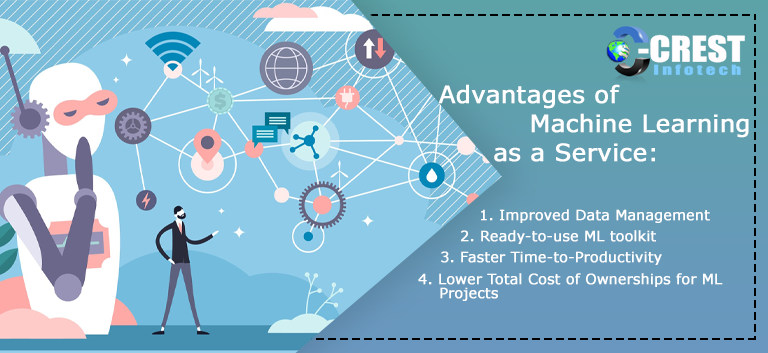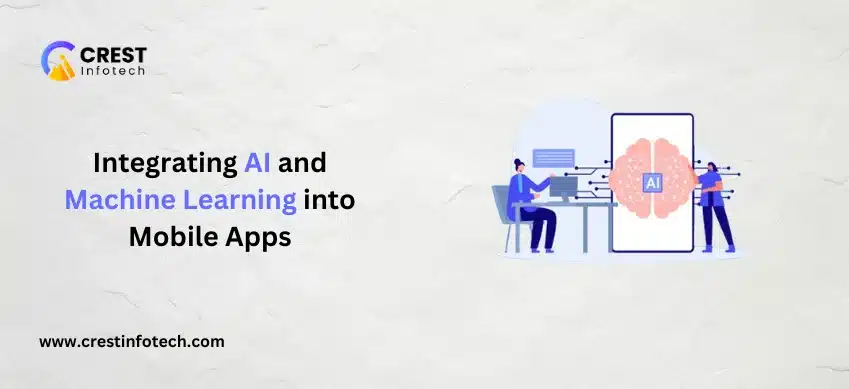Businesses are putting a lot of emphasis on machine learning and artificial intelligence. However, there is still a significant difference between AI hopes and actual implementation. Just 13% of organisations will have successfully deployed ML use cases in production by 2020, with plans to continue scaling them. Why is there such a small number?
In short, since machine learning projects are difficult to commercialise due to numerous inconsistencies in the ML lifecycle. Granted, as Machine Learning as a Service platforms gain traction, this is evolving.
What is MLaaS (Machine Learning as a Service)?
An as-a-service delivery model will naturally emerge if a collection of repetitive processes exists. Machine learning, understandably, is no exception.
Machine learning as a service (MLaaS) refers to a standardised cloud-based infrastructure that includes storage, processing power, and supporting resources and libraries for planning, designing, managing, and deploying machine learning (ML) projects.
Given that data scientists, machine learning engineers, and everyone else involved must perform a series of error-prone prep steps before beginning a new project, such ML services are designed to automate mundane tasks like:
- Cleaning and preparing data
- Retraining and model training
- Control of experiments
- Version control for models
- Execution orchestration
- Pipelines for deployment
And more.
The 4 Biggest Advantages of Machine Learning as a Service:
- Data Processing Changes
Effective model training and subsequent performance require good data.However, data preparation, marking, and management will take up a significant amount of time. Especially when the most important records are kept in on-premise systems.
In this regard, MLaaS platforms have many advantages:
- Data storage that is both elastic and cost-effective
- Data ingestion pipelines that have already been established
- Toolkits to help you set up an efficient data governance system.
Some ML service providers, such as Neu.ro, charge an additional fee for data cleansing and marking, allowing you to avoid wasting time (and money) on certain tasks in-house.
- A ready-to-use machine learning toolkit
The newer generation of machine learning systems come with a comprehensive collection of tools, repositories, notebooks, and frameworks for executing machine learning projects. Pre-built APIs for popular ML use cases, such as predictive analytics, image recognition, and sentiment analysis, are available from some providers.Again, providing a ready-to-use setup of software reduces the amount of time it takes to plan for each new project and increases scaling capabilities. Over 48 percent of AI executives, according to McKinsey, use automated tools to build and evaluate AI models.
- Increased Output in a Shorter Period
Markets demand immediate results. However, only a few engineers are capable of keeping up. According to the 2020 Algorithmia report, over half of businesses require between 8 and 90 days to deploy one model. Furthermore, 18% of teams invest 90 days or more on productionizing a single model. That’s a lot of information.Platforms that include machine learning as a service allow teams to get down to business faster. Data scientists can concentrate on what matters most — preparation, validation, and efficient implementations — with appropriate infrastructure pre-provisioned and pre-configured, adequate GPU allocated and required pipelines set up.
- Projects with ML have a lower average cost of ownership
Computing power is in high demand, particularly when you need to buy new GPUs on a regular basis to expand your distribution capabilities. Given that a single Nvidia GPU unit costs on average $699, the total cost of ownership will quickly spiral out of control.Cloud TPU, on the other hand, can be purchased for as little as $4.50 per hour. When you cut out the costs of hardware repairs and power, the deal becomes even better. You’d also only be charged for hardware while it’s in service. Finally, some MLaaS platforms allow you to run experiments in hybrid environments that combine on-premises and cloud resources.
To sum it up:
Computing power is in high demand, particularly when you need to buy new GPUs on a regular basis to expand your distribution capabilities. Given that a single Nvidia GPU unit costs on average $699, the total cost of ownership will quickly spiral out of control.
Cloud TPU, on the other hand, can be purchased for as little as $4.50 per hour. When you cut out the costs of hardware repairs and power, the deal becomes even better. You’d also only be charged for hardware while it’s in service. Finally, some MLaaS platforms allow you to run experiments in hybrid environments that combine on-premises and cloud resources.
You can also Hire Dedicated Developer and Hire Dedicated Designers. Contact Crest Infotech to know more about Dedicated Development and Designing services in Details.



